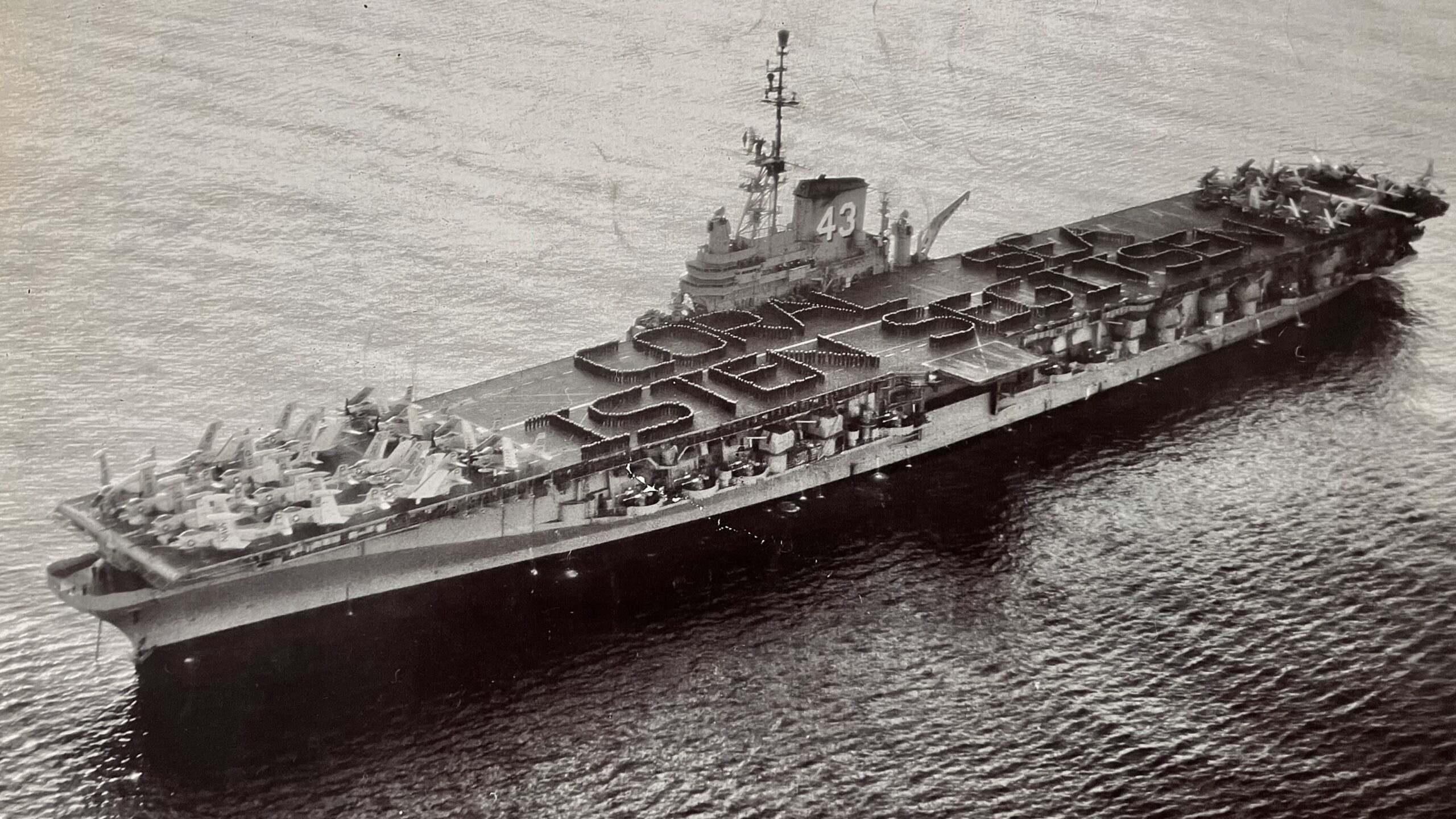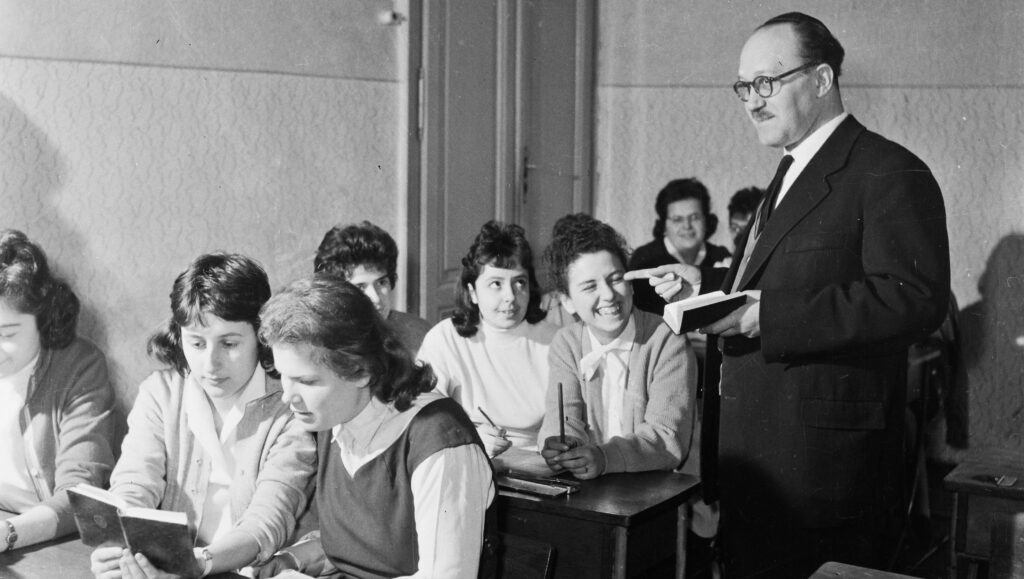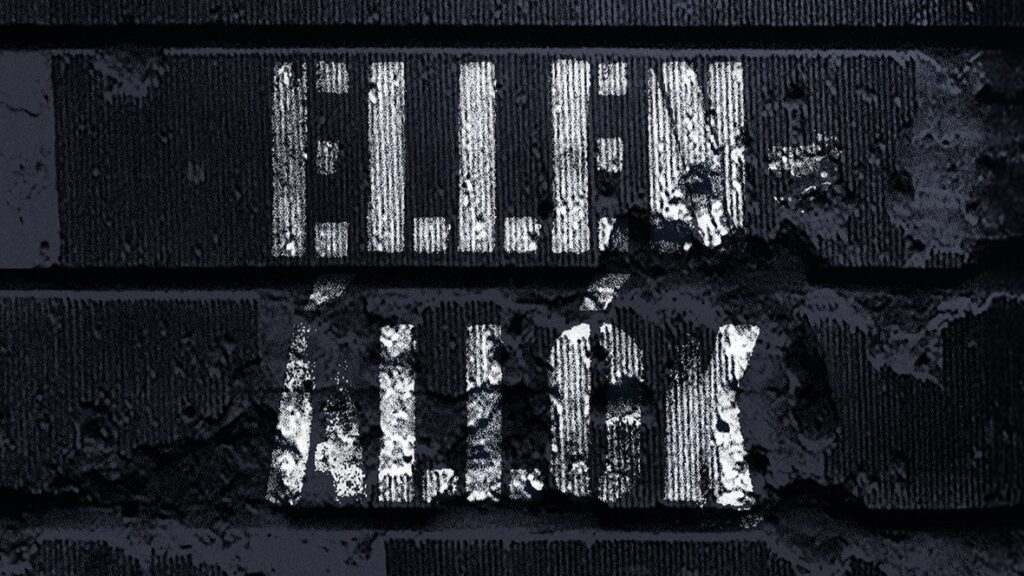The celebrated Hungarian open-source photo archive, Fortepan, recently uploaded its 200,000th image to its amazing database. The photo was donated by one of the 200,000 1956 refugees on 23 October 2024.
The image is a powerful illustration of the impact that the heroic revolution of 1956 made on the memory of the free world. In this article I offer some insights into the symbolism of the USS Coral Sea aircraft carrier photographed at a berth in the Gulf of Naples at the end of 1956 or at the beginning of 1957, bearing a message in Hungarian that says ‘Isten segítsen’, meaning May God help you’, a tribute to the defeated revolution of a small Central European country behind the Iron Curtain.
Aircraft Carriers: Symbols of US Might
The aircraft carrier is a potent symbol of the mind-blowing capabilities of technology. The fact that a ship can launch planes—and not only planes, but heavy, supersonic jet planes—from a flight deck, recover, refuel, and rearm them daily is truly an engineering marvel, a masterpiece of the technological revolution. In the modern age, with the slow decline of British sea power, the United States had become the number one commander of the seas by the Second World War, as the guarantor of free and unhindered marine commerce, the keystone to a modern and industrial world. Aircraft carriers were the core instruments of this newfound American sea power. It was not huge armies, but huge feats of engineering that secured US dominance, from the shores of China to the Mediterranean.
The forces organized around these ships defeated the mighty Japanese Imperial Navy in three and half years, while smaller versions (‘escort carriers’) played a crucial role in winning the Battle of the Atlantic against German submarine groups and securing Allied aerial power in the European war. The carrier in the photo, the USS Coral Sea, and its sister ships—known as the Midway class—were the logical continuation of US aircraft carrier-building, closely intertwined with the post-WW2 geopolitical role of the United States. The class was an upgrade of the earlier aircraft carriers, to be suitable for launching and recovering another contemporary technological marvel, jet planes. By the mid-1950s, when the ‘Isten segítsen’ message was displayed on the USS Coral Sea, the Midway class had been dwarfed by new supercarriers, the ones from the 1950s being equipped with nuclear reactors as well. The planes that they needed to carry were growing in size at an accelerating rate, so the number of planes that a carrier could support was decreasing. And yet, they remained in service for the whole of the Cold War, as the global contest needed the constant presence of American carriers across the world’s oceans.
When the Soviets ended their global presence at the end of the 1980s, military budgets in the United States were cut, and these carriers were the first on the chopping block. They were quickly retired and broken up for scrap.
The Career of the USS Coral Sea
The USS Coral Sea, also known as the Ageless Warrior because of her long career, spent her first tours of duty in the Mediterranean, flaunting the American flag in the narrow sea between Africa and Europe, home to many important hotspots.
Its 1956 deployment was a direct consequence of the Cold War. Coral Sea shipped out to participate in NATO exercises, patrol the coast close to the tense region of Israel and its neighbours, as well as Turkey and Greece. The carrier sailed to where the Cold War began: Turkey, which appealed for American assistance when Stalin demanded Soviet bases to be installed in the Bosporus Strait, and Greece, where the United Kingdom asked the United States back in 1947 to take up the mantle, and finance Athens so it can beat back the Communist guerrillas. The ship, as Fortepan’s blog noted, was conducting humanitarian efforts during the Suez crisis in October and November 1956. On this tour, a new combat element was added to it. In the Fortepan photo, among other aircraft, we can spot the distinct shape of F9F-8B Cougar fighter planes on the deck, specifically modified to carry nuclear warheads. It is likely that there were no nuclear weapons on board of the ship on that specific deployment, but their potential presence evokes the spectre of a nuclear conflict that characterized the Cold War.
The Message on the Ship
The message of support in Hungarian that could be read from above on the aircraft carrier was created by arranging the servicemen on board with a neat choreography. The carrier, serving as a deterrent in the Cold War and projecting US power worldwide, symbolically tipped its hat to the Hungarian heroes of a small nation, brave enough to stand up against Soviet oppression.
According to recollections, an American sailor of Hungarian origin also served on the Coral Sea, perhaps as a helmsman. He was probably the one who came up with the idea that the money originally collected for the crew’s Christmas presents should instead be given to Hungarian refugees. This initiative was endorsed by everyone on the mothership, with a total of 7,500 US dollars being donated to the refugee aid fund. It may have been the same serviceman to have suggested that the crew form the huge message in Hungarian on the deck. Unfortunately, the name and story of the Hungarian American sailor remain unknown.
The photo was taken at an early moment on the long way to victory: the carrier and many of the refugees lived to see the free world defeating the Soviet Union and Hungary regain its sovereignty.
Related articles:








